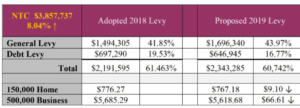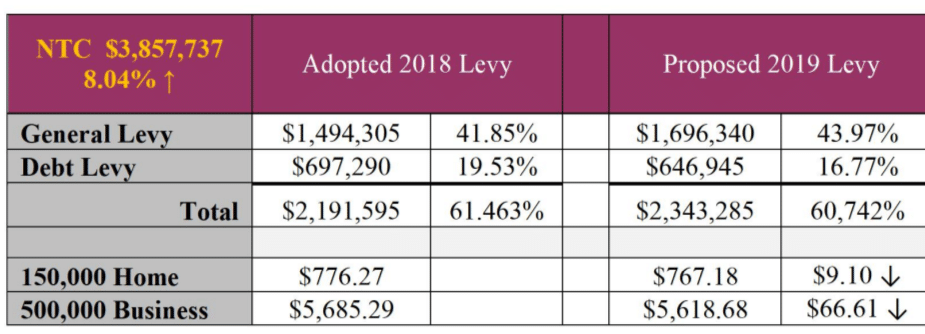by Dave DeMars
Despite missing two of its members, the remaining quorum of the St. Joseph City Council was able to wade through a short agenda that included an open hearing on Truth in Taxation and discussion of a feasibility study dealing with capital funding for the Jacob Wetterling Community and Recreation Center project.
The Jacob Wetterling Community and Recreation Center project, which was started last year, came under council scrutiny. In the past, the council established a committee to work with architect Murray Mack of HMA to create a concept drawing, which the city approved. At that time the city acknowledged that $6 million needed to be raised before the project could move forward. A deadline of May 2019 was set. The project was submitted to the Legislature for bonding money.
With a deadline looming in less than seven months, the council sought to revamp its plans and authorized the hiring of Four Winds Consulting to help with the planning and fundraising. The first part of the planning by Four Winds is to conduct a feasibility study to see if the city can support and raise the required funds. In short, is there enough interest to embark on a full-scale building and improvements project for the community center?
To that end, the council approved spending $25,000, using funds from the half-cent sales tax to fund the study, to determine how to raise the funds for the proposed Jacob Wetterling Recreation Center.
Truth in Taxation
During the Truth in Taxation hearing, Mayor Rick Schultz extended the chance for any members of the public to step forward to speak directly to the council, but there were no takers. Schultz closed the meeting and the council held its discussion.
According to Minnesota statutes, the city must adopt a final budget for 2019 and certify its property-tax levy for payable 2019 to the county auditor on or before Dec. 28. The final levy cannot be higher than the adopted preliminary levy.
Total proposed spending for 2019 was up about 14.5 percent or $3.6 million, amounting to about a $456,000 increase. Most of the tax money, some $2.2 million (10.9-percent increase) in 2019 will be used to pay wages to city workers. The day-to-day tasks of policing, clearing snow from roads, maintaining parks, water and sewage are labor intensive.
Other areas saw increases as well; Repair and Professional services up 17.6 percent to $1.1 million. Capital Outlay up 3.4 percent to $281,475. The need for equipment took up most of the Capital Outlay budget. Things such as computer replacements, pond-maintenance plan, squad-car leases, mowers and sewage-line television gear need to be purchased.
Capital projects such as street improvements, industrial park expansion, adding sidewalks and improving parks are part of the 2019 plan.
City Administrator Judy Weyrens noted there was about a 2-percent increase in the General Levy, while the Debt Levy portion of the 2019 tax bill actually decreased slightly (2.75 percent), and that allowed for a small decrease overall. It amounts to a $9.10 tax decrease on a $150,000 home and a $66.61 decrease on a $500,000 business. All this is predicated on a property’s taxable value being unchanged from 2018.
Part of the General Levy increase was the result of the funding of a new public-works garage in the amount of $60,000. This led to council member Dale Wick asking what the impact would be if that building were not done and the money used in other ways or given back to the public. But the fact remained that at some point a new public-works garage would have to be planned and built.
Public Works Director Terry Thene told the council there is no addition of equipment right now.
“I don’t disagree that we need to (unintelligible), but I also think it’s important we need to start setting aside even not knowing how big that monster might be out there,” said Mayor Schultz in reference to the building of the maintenance/storage building. “Our responsibility is to prepare for the future whatever that might be from a facilities and growth perspective.”
Discussion revealed removal of all or part of the funding resulted in small savings. Finance Director Lori Bartlett estimated the savings would be about 1 percent or $12.76 on a $150,000 home.
“It’s not a big number,” Wick said, “but it’s just the philosophy of as soon as the debt comes off then we are spending it on something else.”
Schultz pointed out the city had added miles of road and something needed to be done in anticipation of housing equipment.
After a good discussion, the council approved the fee schedule increases proposed for next year unanimously.
Schultz suggested there should be more discussion on capital planning and any action on that front was delayed until the next meeting.

This chart shows the proposed levy for 2019. Note that the debt levy has decreased as has the total levy for 2019. Property owners should see a slight decrease in their taxes all things remaining equal.




